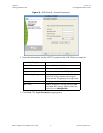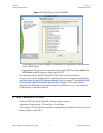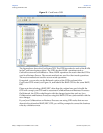
Chapter 4 Section 4.4
Creating SAP BAPI OTDs Creating BAPI and RFC OTDs
eWay™ Adapter for SAP BAPI User’s Guide 41 Sun Microsystems, Inc.
You must manually add these files to the following location:
c:\WINNT\system32
Note: Restart both Enterprise Designer and the domain after installing the JAR file.
4.3.2 Procedures (UNIX)
The instructions for the installation of SAP JCo on other operating systems are included
in the corresponding download files. On UNIX operating systems, add the OS specific
shared lib files to the library path. Check the SAP BAPI eWay readme to confirm the
supported operating systems.
Note: The SAP Java Connector file, JCo version 2.1.6 is not backwards compatible with
previous versions, such as 2.1.3. Confirm backwards compatibility issues with SAP
before attempting to switch between different JCo versions on different machines.
Note: SAP BAPI eWays can run on a 64-bit JVM, but only after the correct 64-bit JCo
files (version 2.1.3 or later) have been applied.
Note: The SAP R/3 application must be configured to communicate with the SAP BAPI
eWay as described in Configuring SAP R/3 in the SAP BAPI eWay Intelligent
Adapter User’s Guide.
Note: We recommend only using the directory path when setting your library path, not
the directory path and file name.
Note: JCo 2.1.6 does not support mixed case, users may need to convert passwords to
upper case for all design time and runtime SAP connection configurations.
Note: You need to copy the JCo JAR file to the \compile\lib\ext folder before
deploying and running command line code generation. You also need to copy the
JCo JAR file to the c:\Sun\ApplicationServer\lib folder before
deploying and running via the Sun Java™ System Application Server Enterprise
Edition 8.1.
Note: You also need to copy the JCo JAR file to the
c:\bea\weblogic91\samples\domains\wl_server\lib folder before
deploying and running via the WebLogic Application Server, version 9.1.
4.4 Creating BAPI and RFC OTDs
You create BAPI and RFC OTDs with the SAP BAPI wizard in the Enterprise Designer.


















